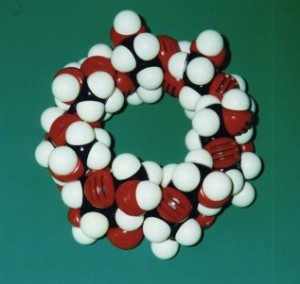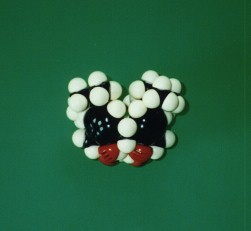Research Page
Current Research Interests
Many molecules exhibit the property of “handedness,” in which the molecule is not superimposable on its mirror image (just like a person’s right and left hand). This phenomenon, which is referred to as chirality, might only be an interesting curiosity were it not for the observation that living systems have a remarkable ability to distinguish the handedness of many molecules. The result can be that one form is active in a person whereas the other is inactive or even toxic. As one example, the right-handed form of cocaine is active and makes one high. The left-handed form is inactive and has no effect in humans. Plants that synthesize cocaine only make the right-handed form. If you made cocaine in your basement, more than likely you would end up with a fifty-fifty mixture of the two forms. Another tragic example occurred with the drug thalidomide, which was administered as a mixture of both forms to pregnant women in Europe in the 1950s and 1960s for morning sickness. One form of the drug helped reduce morning sickness whereas the other form caused birth defects in the fetus. Over half the pharmaceuticals on the market today are chiral. Therefore, the ability to analyze mixtures of such compounds to determine the percent purity and whether the compound is right or left handed is important to chemists.
One way to distinguish compounds with this property is to use host molecules into which one of the forms fits better than the other. For example, your right foot fits better into your right shoe, whereas your left foot in your right shoe feels awkward. We examine molecules that are the equivalent of either right or left shoes, (models of some of these are shown in the accompanying pictures). The different environment of the two forms, one encapsulated in the host, the other not, can be distinguished using a technique known as nuclear magnetic resonance spectroscopy (NMR). Often, the distinction that occurs in the NMR spectrum is rather minimal, and we have devised means of enhancing the difference by attaching lanthanide metals to the hosts. The enhancement results because the lanthanide ions are magnetic.
Originally funded by Research Corporation, the work was since supported for many years by the National Science Foundation. Students have worked with me on this research on paid summer assistantships, sophomore and junior year independent study projects, and senior year thesis and Honors thesis projects. Many of these students have presented their research at national and international conferences. Many of them are also coauthors on peer-reviewed publications that describe their research.
 Cyclodextren |
 Calixarene |